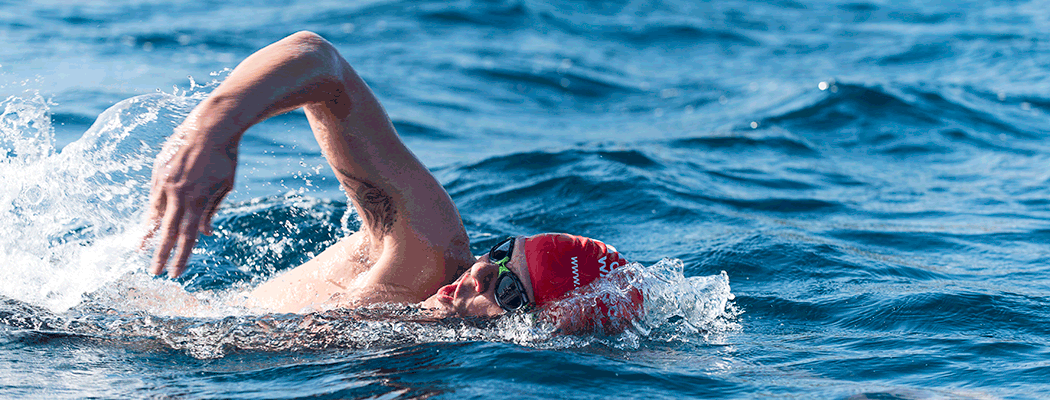Moving from the pool to open water...
We are lucky enough to have Adam Walker write a series of short articles over the next few weeks, leading in to The Ruby, on various topics on the art of open water swimming and moving efficiently through water.
Adam is a swim coach and motivational speaker who became the first British person to swim the hardest 7 ocean swims in the world. He teaches people swim stroke, psychology and all aspects in order to achieve their specific swimming goals.
From Pool to Open Water - 10 points
by Adam Walker
1. Buy the necessary equipment recommended for training such as a tow float for safety, swim hat (latex, silicon and neoprene) although worth noting that some long distance swims do not allow neoprene as part of the rules. Also, bring along a woolly hat and something warm for afterwards. In addition, buy a wetsuit from a recognized brands. Make sure it fits, as if it’s too tight this will restrict you and if it’s too loose then it will fill up with water. Also decide what is the right thickness for your requirements. In addition earplugs can really help to reduce irritation and increase insulation. Not forgetting goggles that are comfortable and fit the shape of your eyes is very important.
2. Find yourself a lake or other open water source that has organised swimming and make sure you have regular dips for acclimatization to cold water. Short dips will really help you to get used to the temperature drop from a pool. The more you do, the easier it becomes, and you can gradually increase the time in the water as you become more comfortable.
3. One very important aspect just before going into the water is the mindset. It’s very important to focus on positive thoughts and think about how much you will enjoy the swim, being one with nature, and challenging yourself. Do not pollute your mind with negative thoughts. You get what you focus on!
4. When entering the water wet back of your neck and face as these are the sensitive parts and prime your body for entry. Take a deep breath and exhale and immerse yourself up to your neck. I find kicking my legs to get the blood flowing beneficial. Try and get going within 30 seconds, especially in colder temperatures.
5. As there are no pool walls to build up your confidence I recommend swimming in a controlled area ideally where you can stand up and swim from buoy to buoy. Start off with a small distance and then increase gradually as you get more confident.
6. Swim with a partner as this give you a focus and will make you feel more confident. It will also help when you start competing as you will be used to swimming alongside someone. I find swimming stroke for stroke keeps your mind occupied and ensures that you don’t allow any negative thoughts to creep into your mind.
7. Also getting used to swimming in a group close together. This is especially beneficial if you are planning to do races. If you’re not use to it, it can be quite intimidating if you are swimming close to other swimmers, particularly on a start where the pack are pushing hard for position. I recommend taking it in turns in minimum groups of 3 to swim close and be the one in the middle.
8. Focus on stroke technique. As you will be swimming longer distances without stopping your swim technique and efficiency will be of paramount importance to save energy as well as keeping injury free. In waves you will find it easier to go underneath them than over the top. Having a low head will really help this. There is also a big difference from saltwater and freshwater in that salt water provides buoyancy, whereas fresh water doesn’t so learning to be more streamlined is even more important. See the Ocean Walker technique for more on this.
9. Sighting is a key skill to master in open water. If you focus on a point beyond where you are going to swim this will act as a guide. The amount of times you sight will also dependent on how efficient your stroke is and whether you can swim in a straight line. You can master this in a pool which will increase your confidence and reduce how many times you sight. My recommendation is to not lift your head up too high, just enough so your eyes clear the water. You can use the pull to help rise you up just enough to clear the water. You can breathe when sighting, however I personally breath separately as this is less efficient. If you lift your head too high your legs will drop causing an inefficient body position.
10. You can practice in training a fast start and quickly getting into a rhythm. Ideally you will have a few minutes to acclimatize moving arms, legs, wetting the face, so when you start it isn’t as much of a shock to the system and you can fall into a rhythm.







